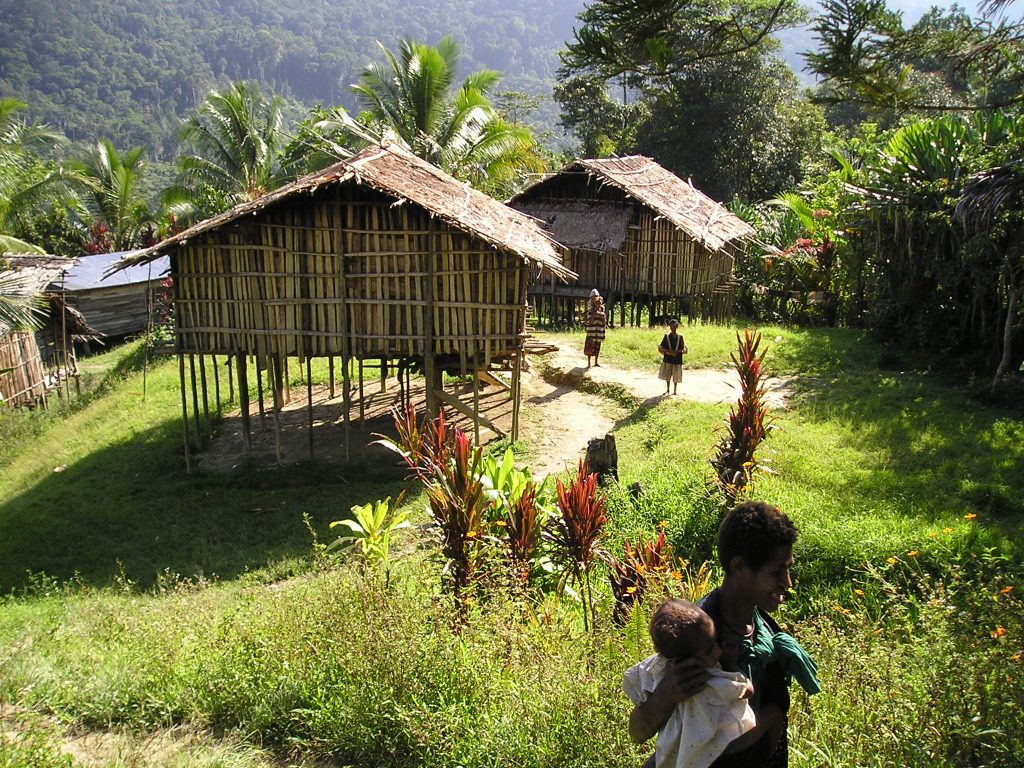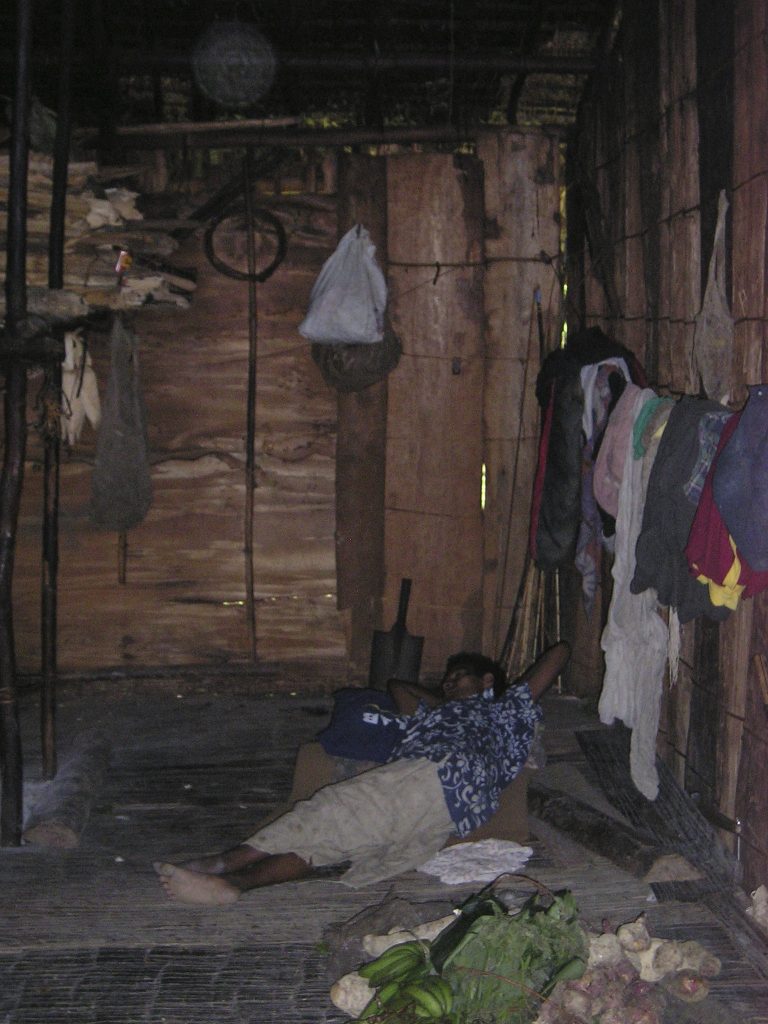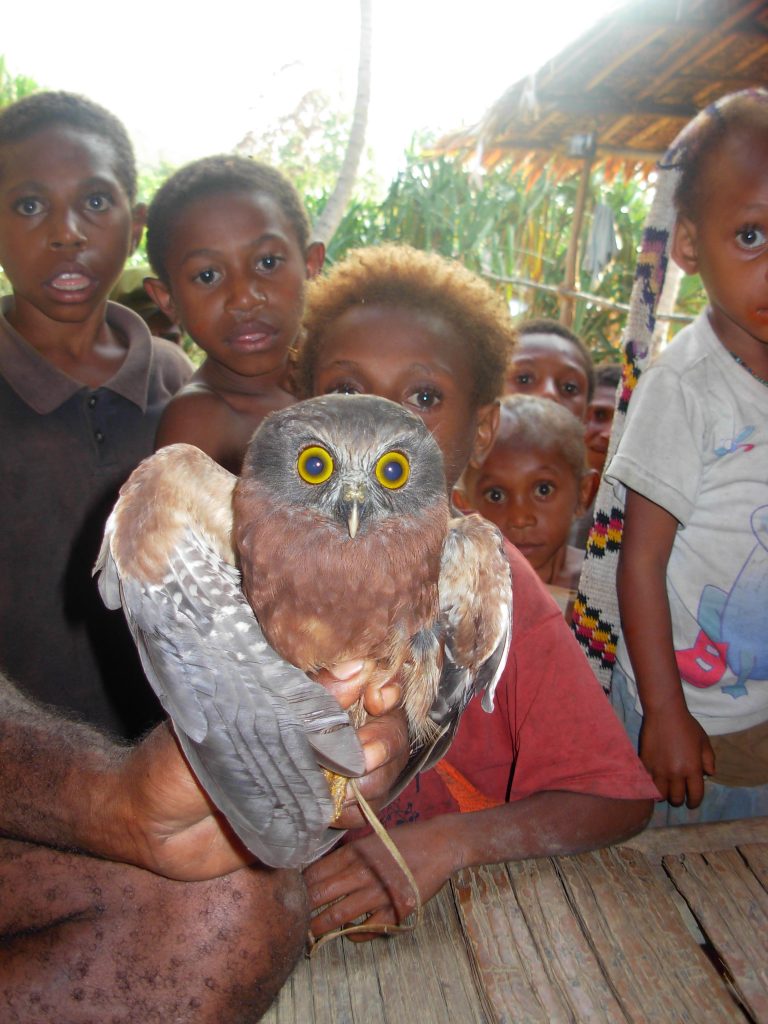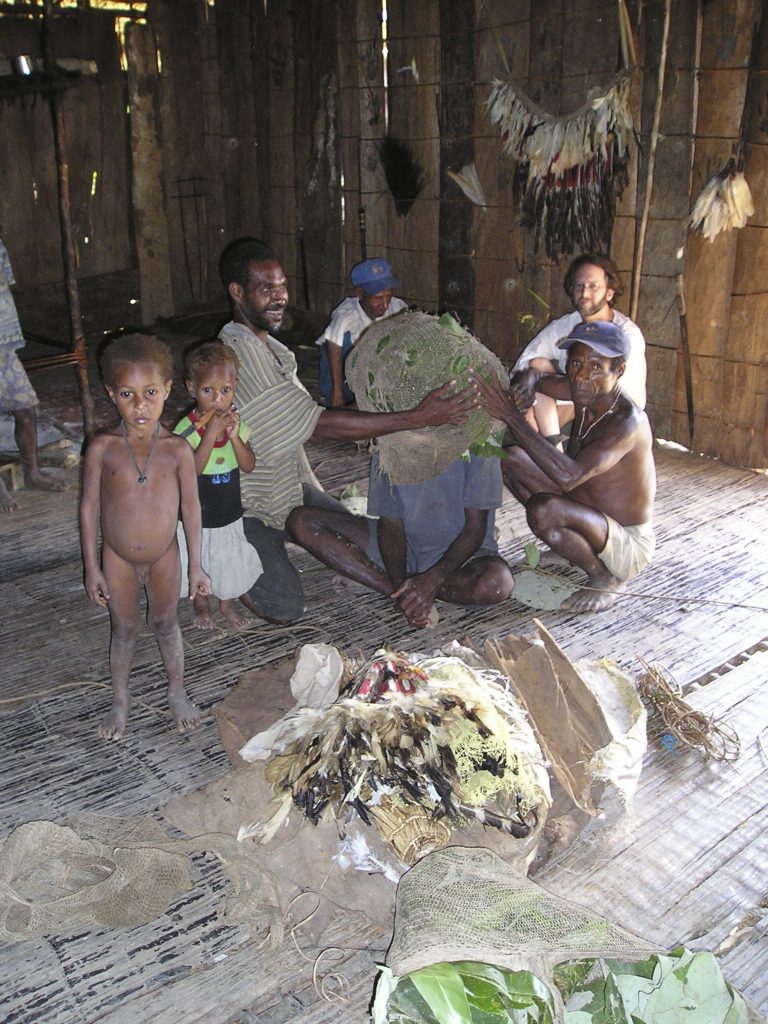The Night I Was Attacked by a Ghost

Two decades ago, in a remote mountain hamlet in central New Guinea, I was the victim of a ghost attack. I had traveled there from my home in Wisconsin to study the religious beliefs of a small tribe called the Asabano. The ghost was female, belligerent, and seriously scary. I recognized her as my long-dead sister, Sue, who had been killed when she was 15 and I was almost 10. As I was told, a hunting rifle had been aimed and its trigger pulled in jest by one of her friends, who didn’t know it was loaded.
Sue had been funny, easygoing, and popular—a terrific big sister to me. In my dreams at the time of her death, images of her alive and friendly were mingled with scenes of her burial. I remember waking, confused in my grogginess, wondering whether she was alive or dead.
I don’t recall Sue appearing to me ever again until that dawn morning two decades after her death when I found myself immersed in another culture on the other side of the planet. Why was she suddenly haunting me, and why had she been transformed into a threatening banshee? In my native European-American culture, ghosts are supposed to be scary, but they are normally characters in entertaining fantasy stories rather than actual dead relatives. I had never before feared my sister, in life or after her death. I knew that Sue was truly dead and gone. I didn’t even believe in ghosts. And I didn’t think that dreams could be trusted to accurately depict external reality.
While I was asleep I was not lucid—I didn’t realize that I was dreaming. Nor did my disbelief in ghosts enter my awareness. All I knew was that Sue had returned, and this time she was out for my blood. (It was not clear to me how or why.) I awoke in terror, a full-grown man in my 30s, hiding my head under the bedclothes.
As I awoke and my senses came back to me, I realized I had been dreaming—which according to my culture’s theory meant my imagination had conjured the experience. I also remembered my conviction that ghosts don’t exist. Besides, this apparition was nothing like my real sister. Yet despite these seemingly comforting thoughts, I had trouble shaking off my fear. That lingering fear left me feeling rather foolish, but it also helped me understand the topic I was researching: how dreams help make supernatural beliefs so tenacious.
Remembering dreamed scenes, impressions, or moods in waking life influences both our understanding of reality and the decisions we make. My comparative investigation of dream interpretation among the Asabano shows that the cultural models with which we make sense of dreams go a long way in determining what that influence will be.
Had I learned to understand dreams by growing up in 21st-century Asabano culture, I probably wouldn’t have felt relieved upon waking. I would likely have believed that spiritual beings are real, live in certain parts of the landscape, and can kill. During my ethnographic fieldwork, Asabano people told me many stories about spirit encounters, often in dreams. Their tradition explains certain dreams as scenes their souls witnessed while traveling outside the body. Other dreams, they often believe, are visitations, messages, or scenes of actual events, elsewhere or in the future. Those who are taught to believe that dreams are encounters with the external world rather than images produced by the subconscious mind think that what they dream really happens.
Culturally learned expectations can override what our senses would otherwise tell us. If trusted elders and peers have told us that ghosts or gods are really out there, or that dreams are sensory perceptions rather than figments of the imagination, we are likely to interpret subsequent events, in waking and sleeping life, as supporting evidence. Dreams that align with what people have told us is true can provide us with “proof” that those people were right. It’s a circular logic to which we humans are prone, but we are able to overcome it with effort.
Dreams are produced by the mind’s subconscious imagery generator: the autonomous imagination. Just as our hearts pump blood and our intestines extract nutrients without our consciously willing them to do so, the autonomous imagination churns up thoughts and feelings without our direction or permission. Our own bodily functioning produces dream images, yet they are disguised to give the impression of having come from some external source.
The heightened gullibility and decreased mobility that we experience when we dream also help maintain the illusion’s verisimilitude. While dreaming, the brain’s ability to question or doubt what’s happening is offline. Bizarre qualities like illogical plots and mixed-up character identities don’t immediately cue us in to the fact that we are in the midst of an elaborate set of illusions.
With our awareness suppressed and our attention to the inner world enhanced while we sleep, we remain unaware—blissfully or otherwise—of external reality. Sleep paralysis normally protects both our bodies and the illusion by preventing us from physically acting out our dreamed movements, which would quickly and painfully reveal some of the differences between the dream and reality.
When our culturally informed waking awareness returns, our assessment of what, if anything, was real in the dream shifts accordingly. With the benefit of scientific awareness, for example, we can recognize ghosts, gods, and dreams as made of the same stuff: memories called up and animated without our conscious intent or awareness.
Anthropologists have understood since the 19th century that dreaming is an important cause of religious beliefs. When dead people appear alive to dreamers, it seems to validate the idea of an immortal soul. It also suggests that forming relationships with these spirits—or avoiding them—might be prudent. Sharing remembered dreams of spirits or gods helps convince others that supernatural entities are real and relevant. Through this process, new supernatural beings can be invented, shared with others, and brought to life.
Now, improved understanding of the physiological functions of dreaming for memory consolidation is revealing how we learn and change not only religious beliefs but also other types of knowledge and culture.
To show how, I need to return to that morning I awoke afraid in my New Guinea home. Where had this image of my sister as an attacking ghost come from, and why had my subconscious mind produced that particular scenario at that moment?
In the preceding weeks, as I was immersing myself in the unfamiliar ways of the Asabano people, my hosts had warned me of dangerous spirits and witches. Elders said that people have souls that survive death and can help or harm us. Dreams of dead relatives, they had told me, are real visitations. When we die, those who are already dead celebrate because we will join them in the afterlife. In other words, our dead relatives might wish for our deaths. When the Asabano dreamt of dead people dancing and singing, it meant someone had died or was about to die.
While documenting and ruminating on these beliefs, like a good ethnographer I retained professional distance. I did imagine what it felt like for such supernatural beings to be real parts of the environment, and how that would influence my behavior as it did the Asabanos’. But I had not allowed my objectivity to be entirely swept away; I had not consciously adopted the religious beliefs I was there to study. Nevertheless, as I learned the culture, my autonomic mind sought to make sense of these foreign notions alongside my familiar ones. The dream of my sister’s scary ghost may have been an image of the two cultures in the process of mingling in my memory.
Much of the cognitive work of evaluating, reconciling, and consolidating new experiences and ideas into long-term memory takes place while we dream. Indeed, scientific evidence indicates that the alternating and hybrid images that we haplessly witness as dreams are actually remembered snippets being called up, compared, and combined as the brain updates its mental models of reality. Dreams, then, are interwoven scenes from recent and earlier memories and thoughts. They allow us to glimpse the mind’s process of making culture.
So it turns out I had encountered not only a ghost, but also another culture being recorded in my own mind that morning in New Guinea. Exposed to Asabano beliefs in the days before, my sleeping brain was busy at work incorporating a version of them into my own body of cultural knowledge. My dream gave me a veiled glimpse of a spirit of mixed cultural origins. Not just that—I saw my own brain’s process of learning elements of a new culture and placing them in the context of what I already knew.
My dream of Sue’s ghost reminded me of a moment we shared when we were both children. She told me about a scary, supernatural dream she had had. She was walking down our long driveway in the dark. A witch appeared and began to chase her. Sue ran, but looking back in horror, she saw that the witch’s legs stretched like rubber, making vast strides that could not be outrun. About to be captured, she woke up. I think she presented it as an entertaining story, not meant to be taken seriously. But I found myself looking over my shoulder when walking that long driveway for some time afterwards—just in case.
While culture shapes how we interpret dreams, it is also susceptible to being changed by them. Since dreams appear to show reality and combine images in new ways without conscious direction, they present nightly challenges to any culture’s beliefs.
Inaccurate and misleading as they are, supernatural beliefs are accepted and promoted in certain sectors of all known societies. They can be hard to shake, in part since every lingering dream suggests them to each of us anew. Faith in goblins and deities of all descriptions is given a new chance, at least for a little while, every time we dream.
Thankfully, my fear of Sue’s ghost never returned—even, so far as I remember, in my dreams. As it dissipated in those tense moments after I awoke, my mind began transforming it from a physical threat into a curious cultural phenomenon for anthropological analysis.


































